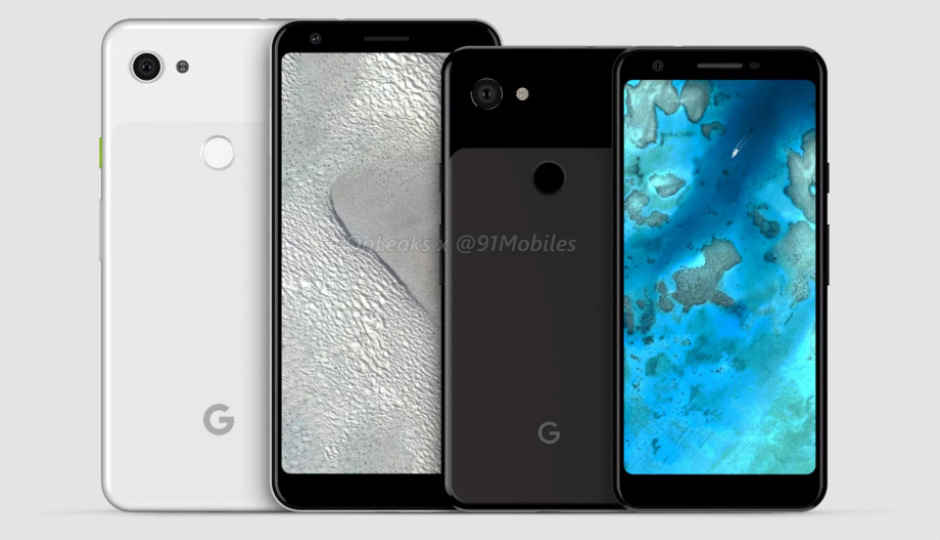 Highlights Google Pixel 3XL with 4GB RAM spotted Listing suggests Snapdragon 710 processor May launch in Spring 2019 as Verizon exclusive There have been plenty of rumours about the existence of a “cheaper” variant of the Pixel phones, dubbed Pixel Lite. The Google Pixel 3 Lite and Pixel 3XL Lite have been leaked repeatedly through CAD renders and what not. Every time the phone leaks, there is some new information that comes to light. Today, the Pixel 3 Lite made an appearance on Geekbench, revealing some interesting information about the specifications of the allegedly upcoming smartphones from Google. The newest listing on Geekbench shows the Pixel 3XL Lite as sporting 4GB of RAM, which is interesting seeing how an earlier leak that revealed the same phone to sport 6GB of RAM. The Google Pixel 3 Lite and Pixel 3 XL Lite are supposed to be mid-range smartphones from Google, but somehow, the XL variant sports more RAM than Google’s current flagship device. Regardless, the device managed to score 1640 and 4973 in Single and Multi-Core tests respectively. The numbers fall within the expected range for mid-range devices. A few days ago, thre same phone had popped up on Geekbench, but with 6GB RAM listed instead of 4. The Google Pixel 3 Lite is expected to be powered by the Qualcomm Snapdragon 670 while the bigger Google Pixel 3XL Lite is expected to be powered by the Qualcomm Snapdragon 710 chipset. With respect to RAM, we expect both the phones to sport up to 4GB RAM, but seeing that 2019 is all about new trends, we could see Google deviate from the norm. The Google Pixel 3 XL Lite is rumoured to come with a 6-inch display and 32GB of RAM. Both the phones are expected to sport a 12-megapixel rear camera and an 8-megapixel front-facing shooter which would allegedly deliver the same quality of imaging as the flagship Pixel smartphones. The Google Pixel 3 Lite, on the other hand, will sport a smaller, 5.56-inch FHD+ display and a smaller battery. Interestingly, rumours point that the two phones could support Qualcomm’s Quick Charge 4+ technology, a proprietary standard, instead of USB-PD, an open standard that Google has been pushing for the mass adoption of. As of now, it isn’t clear if and when Google will announce these new mid-range smartphones, although rumours suggest a Spring 2019 release.
Highlights Google Pixel 3XL with 4GB RAM spotted Listing suggests Snapdragon 710 processor May launch in Spring 2019 as Verizon exclusive There have been plenty of rumours about the existence of a “cheaper” variant of the Pixel phones, dubbed Pixel Lite. The Google Pixel 3 Lite and Pixel 3XL Lite have been leaked repeatedly through CAD renders and what not. Every time the phone leaks, there is some new information that comes to light. Today, the Pixel 3 Lite made an appearance on Geekbench, revealing some interesting information about the specifications of the allegedly upcoming smartphones from Google. The newest listing on Geekbench shows the Pixel 3XL Lite as sporting 4GB of RAM, which is interesting seeing how an earlier leak that revealed the same phone to sport 6GB of RAM. The Google Pixel 3 Lite and Pixel 3 XL Lite are supposed to be mid-range smartphones from Google, but somehow, the XL variant sports more RAM than Google’s current flagship device. Regardless, the device managed to score 1640 and 4973 in Single and Multi-Core tests respectively. The numbers fall within the expected range for mid-range devices. A few days ago, thre same phone had popped up on Geekbench, but with 6GB RAM listed instead of 4. The Google Pixel 3 Lite is expected to be powered by the Qualcomm Snapdragon 670 while the bigger Google Pixel 3XL Lite is expected to be powered by the Qualcomm Snapdragon 710 chipset. With respect to RAM, we expect both the phones to sport up to 4GB RAM, but seeing that 2019 is all about new trends, we could see Google deviate from the norm. The Google Pixel 3 XL Lite is rumoured to come with a 6-inch display and 32GB of RAM. Both the phones are expected to sport a 12-megapixel rear camera and an 8-megapixel front-facing shooter which would allegedly deliver the same quality of imaging as the flagship Pixel smartphones. The Google Pixel 3 Lite, on the other hand, will sport a smaller, 5.56-inch FHD+ display and a smaller battery. Interestingly, rumours point that the two phones could support Qualcomm’s Quick Charge 4+ technology, a proprietary standard, instead of USB-PD, an open standard that Google has been pushing for the mass adoption of. As of now, it isn’t clear if and when Google will announce these new mid-range smartphones, although rumours suggest a Spring 2019 release.from Latest Technology News http://bit.ly/2Ws6IRL

Comments
Post a Comment